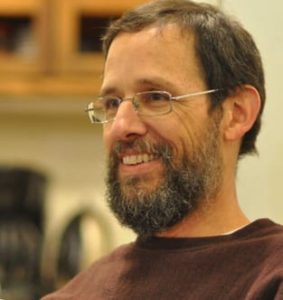New Choices for Arizona Cities and Counties in the APS Utility Service Area
Based on Testimony to the Arizona Corporation Commission by Russell Lowes, 8/28/2020, revised 6/4/2022
Electric ratepayers in our state have a choice, if the State of Arizona authorizes us to do what ten other states have already done. We will have the choice to move away from “business as usual” to a new Community Choice Energy (CCE) scenario relying heavily on renewable energy, energy efficiency, solar, battery storage and some wind. The benefits will be high. A typical household will save a substantial amount of money on monthly bills and will dramatically reduce carbon emissions.
Lower economic status individuals and families are disproportionately affected compared to higher income earners. Hence, to opt for a lower cost CCE scenario will help achieve energy equity in Arizona Public Service (APS) territory. Conversely, to opt for the higher-cost scenario of expanding the old APS mix would continue to create economic hardship for many ratepayers.
The current APS breakdown of energy options, as of 2021, includes power production mostly through nuclear and fossil energy, with some solar and efficiency. The new CCE scenario would bring a reduction in the cost of expansion, compared to the old mix, by about 29%, after about 4 years. The new scenario with CCE would also bring about an extreme reduction in CO2 emissions, by about 63% after a CCE operates for 4 years and 96% after it is 8 years old.
In the accompanying spreadsheet, you will see the detailed assumptions of this. I compare the current blend of energy options, projected forward with new expansion, with the potential new CCE scenario.
In the accompanying spreadsheet you will find the current APS energy mix, assuming the same projected future mix and associated costs of each technology for electrical expansion (that is, the cost of expanding with new power capacity for nuclear, coal, gas, solar, etc.) and that is in Table 1, in light blue, to the left. Table 1 also includes CO2 emissions and water consumption of power plants.
Table 3, in light purple, to the right, lists the energy mix and the costs, CO2 output and water use of a Community Choice Energy option.
Both the APS mix in Table 1 and the CCE mix in Table 3 are based on future costs of electrical capacity additions, given current cost estimates for newly procured energy. Similarly, both Tables 1 and 2 refer to Table 4, at the bottom, cream-colored, which is a recalculation of energy imported by APS to spread this imported energy into the mix of the different types of electricity APS currently produces. This recalculation is reflected in the first, light blue block (2nd column); this recalculation Table 4 shows how the percentages in APS household estimates in the 2nd column of Table 1 were derived.
The green “Summary” section below the three top tables shows the dollars saved per household per month, as well as the savings in CO2 Emissions per month and the water use for the CCE household per month. The bottom line is this: to steer away from expansion of the current mix of energy for new capacity, and to embrace a typical CCE strategy will cause a monthly savings for a family in APS territory of about $37 per month, about a 29% cost reduction compared to expanding with the current blend that APS lists in its latest annual report.
As large as this cost saving is, the savings in CO2 produced from the switch is stunningly high. After about 4 years of operating a CCE, a typical household using 750 kilowatt-hours per month will reduce their CO2 output from an existing 818 pounds a month to only 300 pounds. This is a reduction of 518 pounds of CO2 per month, or 63%! After about 4 more years, after the CCE goes from 80% renewable to 100% renewable with storage, the CO2 life cycle output will decrease to 31 pounds, a 96% reduction from the APS business as usual scenario.
Water reduction from cooling power plants will similarly go down. After 4 years of operating a CCE it should go from 338 gallons per month to 78 gallons, a 77% reduction. After another 4 years, at age 8, the CCE use should go down to 13 gallons per month, a 96% reduction in water use.
Clearly the move away from the outdated paradigm of energy toward the new Community Choice Energy approach will be better for families, our overall economy, and our environment.
Bio, Russell Lowes
My background is in power plant economics and I testified as an expert witness before this Commission in 1986 on the economics of the Palo Verde Nuclear Generating Station (PVNGS) and the alternative coal plant option. As the lead author of the book with 3 other authors, Energy Options for the Southwest, I projected PVNGS construction cost at $6.1 billion, while APS projected $2.8 billion. The plant was completed at over 100% more cost than APS had projected and within 4% of our projection, at $5.9 billion. This is one of the most accurate nuclear plant cost projections in the nation, see https://tiny.cc/EnergyOptionsSW.



